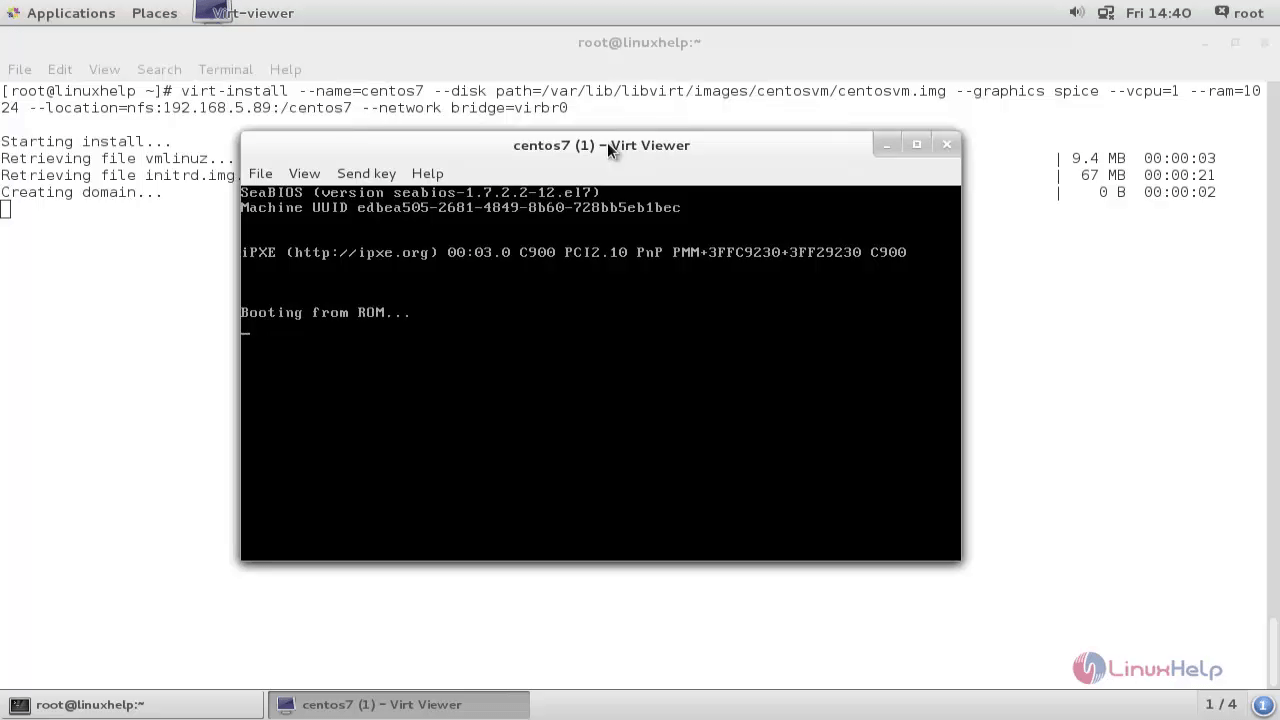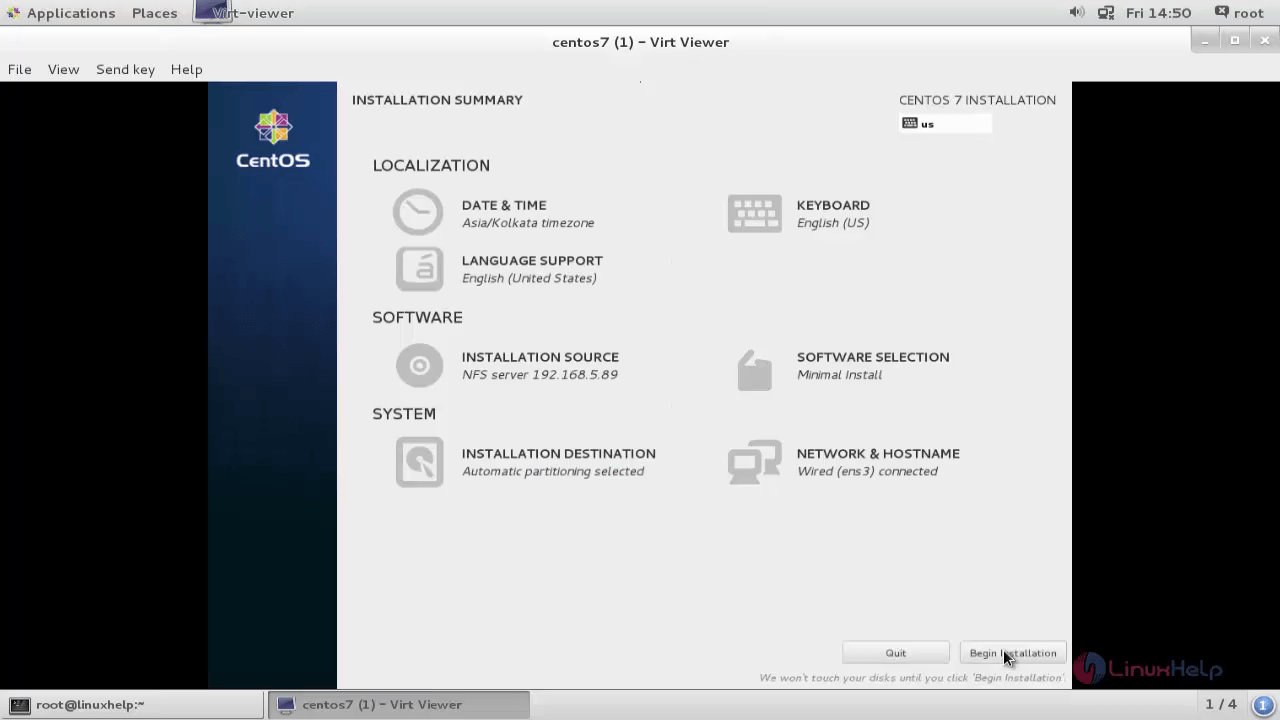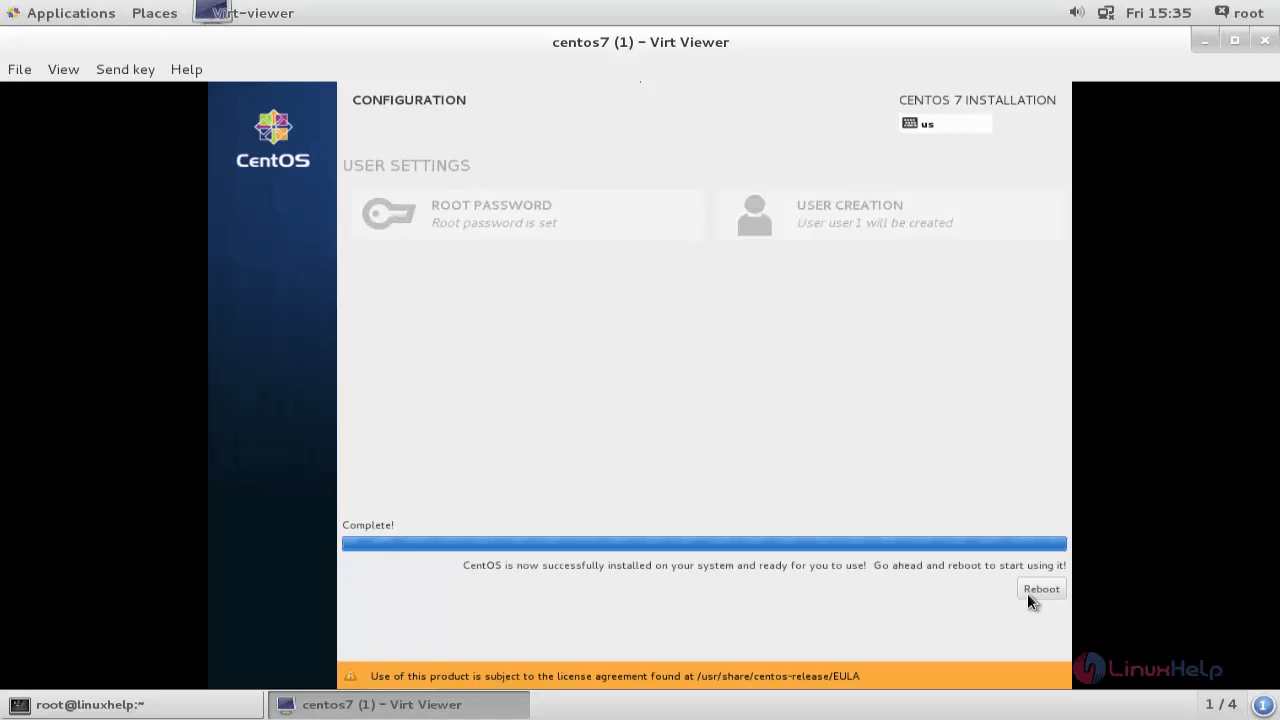How to Create and Manage KVM Virtual Machine through Command Line in Linux
To Create and Manage KVM Virtual Machine through Command Line in Linux
In this article we will discuss about creating and Managing virtual machine through command line.
To manage virtual guest machines we use “ virsh” command.
[root@linuxhelp ~]# man virsh
“ virt-install” command used to install the virtual machine.
[root@linuxhelp ~]# man virt-install
“ qemu-img” command is used for creating disk image.
[root@linuxhelp ~]# man qemu-img
Configure the Storage Pool before creating virtual machines, here we are going to store the image file for the virtual machines.
Now run the following command to define storage pool.
[root@linuxhelp ~]# virsh pool-define-as centosvm dir - - - - " /var/lib/libvirt/images/centosvm/"
Pool centosvm defined
To view the list of created pool storage.
[root@linuxhelp ~]# virsh pool-list --all
Name State Autostart
-----------------------------------------
centosvm inactive no
default active yes
Now run the following command to build the created storage pool.
[root@linuxhelp ~]# virsh pool-build centosvm
Pool centosvm built
Activate the storage pool.
[root@linuxhelp ~]# virsh pool-start centosvm
Pool centosvm started
[root@linuxhelp ~]# virsh pool-list --all
Name State Autostart
-----------------------------------------
centosvm active no
default active yes
To start the storage pool service automatically, run the autostart command.
[root@linuxhelp ~]# virsh pool-autostart centosvm
Pool centosvm marked as autostarted
[root@linuxhelp ~]# virsh pool-list --all
Name State Autostart
-----------------------------------------
centosvm active yes
default active yes
Now the storage pool is configured. Run the following command to view the information about the storage pool.
[root@linuxhelp ~]# virsh pool-info centosvm
Name: centosvm
UUID: 737f134e-ee87-489e-8326-a2c7eaea2526
State: running
Persistent: yes
Autostart: yes
Capacity: 17.55 GiB
Allocation: 11.29 GiB
Available: 6.26 GiB
Create Disk image for the virtual machine.
[root@linuxhelp ~]# qemu-img create -f raw /var/lib/libvirt/images/centosvm.img 10G
Formatting ' /var/lib/libvirt/images/centosvm.img' , fmt=raw size=10737418240
Create a new virtual machine through a command line using virt-install command.
Mention the below options to install the virtual machine.
--name : Name for the virtual machine.
--disk path : Location of disk image.
--graphics spice : To connect to graphical console “ spice”
--vpcu : Number of virtual cpu’ s.
--ram : Amount of ram to allocate for guest.
--location : source path of installation packages.
--network :For virtual network.

Choose the requirement for the installation and complete the process.


After the virtual machine is created run the following command to view the status of all virtual machines.
[root@linuxhelp ~]# virsh list --all
Id Name State
----------------------------------------------------
2 centos7 running
Run the below command to edit the configuration file located in /etc/libvirt/qemu/centos7.xml
[root@linuxhelp ~]# virsh edit centos7
View the Virtual Machine’ s information, by running the following command.
[root@linuxhelp ~]# virsh dominfo centos7
Id: 2
Name: centos7
UUID: 23af0e98-cc4b-4e27-a594-301137883bb8
OS Type: hvm
State: running
CPU(s): 1
CPU time: 177.5s
Max memory: 1048576 KiB
Used memory: 1048576 KiB
Persistent: yes
Autostart: disable
Managed save: no
Security model: selinux
Security DOI: 0
Security label: system_u:system_r:svirt_t:s0:c19,c176 (enforcing)
To display the CPU and Memory Usage for virtual machines.
[root@linuxhelp ~]# virt-top
Shutdown the virtual machine, by using the following command.
[root@linuxhelp ~]# virsh shutdown (or) turn off centos7
Domain centos7 is being shutdown
To reboot the virtual machine.
[root@linuxhelp ~]# virsh reboot centos7
Domain centos7 is being rebooted
Finally start the virtual machine.
[root@linuxhelp ~]# virsh start centos7
Domain centos7 started
Comments ( 0 )
No comments available